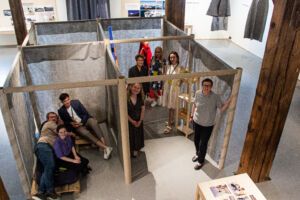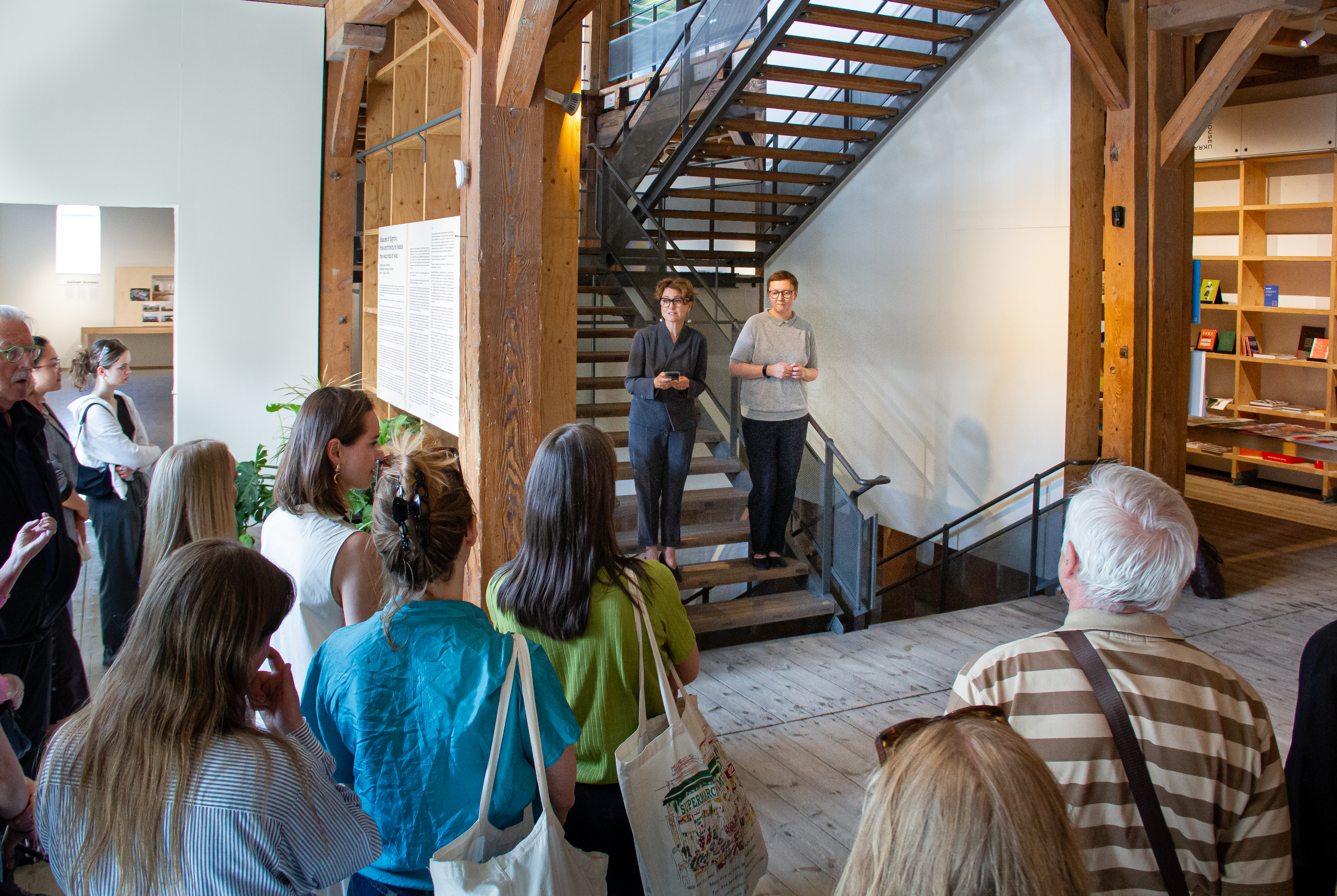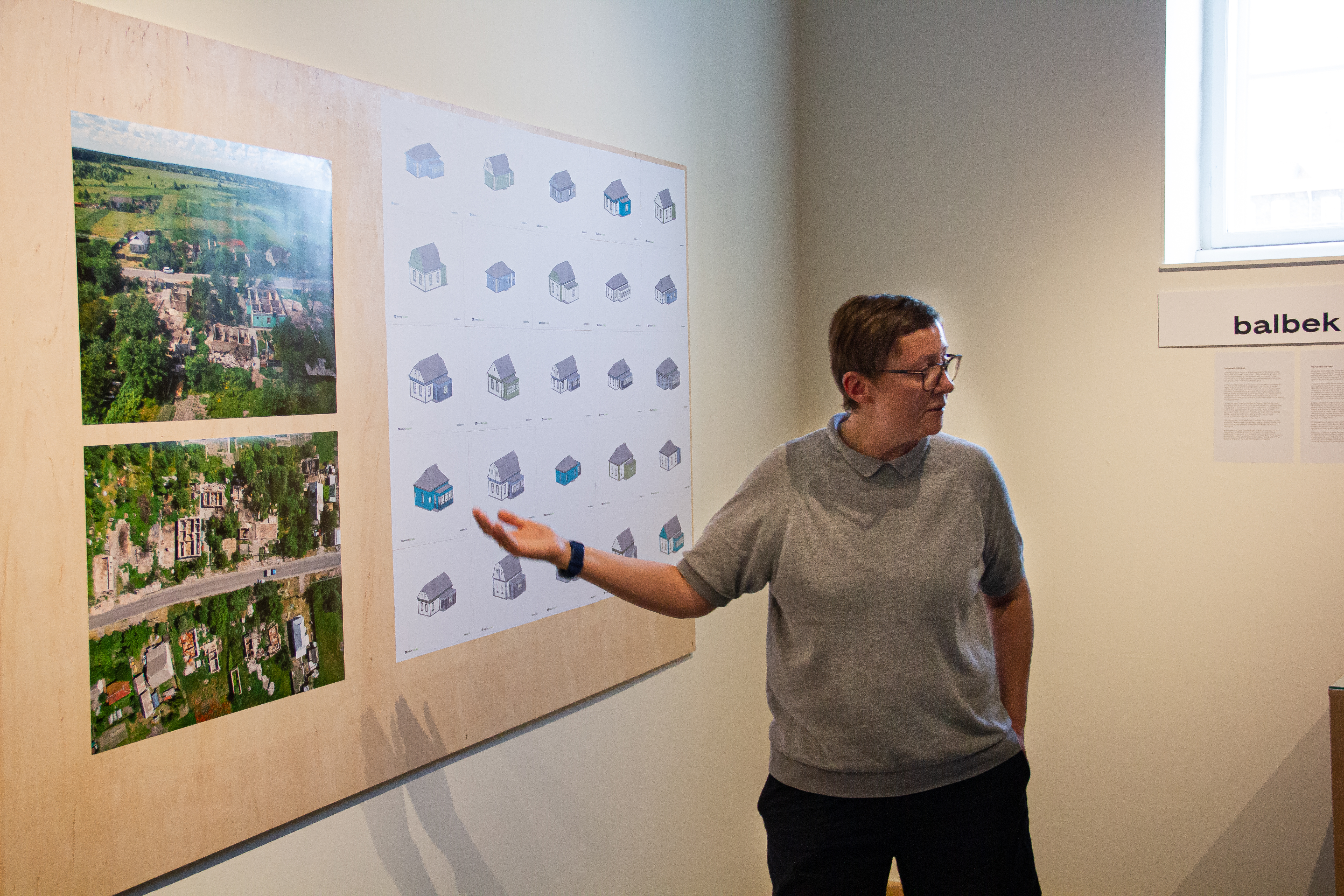News
Exhibition preview: Can architecture heal the wounds of war?
This article is more than 2 years old.
Visit Ukraine House Denmark to discover how reconstruction of the country is one of the greatest architectural challenges of the century

all photos: Farid Seifulin
Wars, climate change, overcrowding and other crises not only pose a threat to human life but also to architecture. Hence, the exhibition ‘Spaces of Dignity’ was chosen for the opening of this year’s Copenhagen Architecture Festival.

Plunge into Ukraine’s wounded culture
Can architecture heal the wounds of war – physically as well as mentally? ‘Spaces of Dignity’ proposes different answers to this question by displaying the challenges and achievements of Ukrainian architecture during the war.
From June 1 to August 10, visitors will be able to explore how architecture can help recreate torn social connections through workshops, debates and panel discussions.

The event will take place in Ukraine House Denmark in Christianshavn. With the help of the institution, Ukraine’s cultural heritage is promoted. The goal is to strengthen the relationship between the two countries through the close co-operation between Danish and Ukrainian organisations and artists.
The magic of techno music
During the exhibition’s opening, the curator Katya Stukalova presented some of the different projects established by Ukrainian and Danish architects.

The initiative ‘Repair Together’ shows how raves can bring people together – something that many Danes can relate to. While listening to techno music, volunteers helped restore 30 damaged houses and rebuilt seven new ones.
Different rapid construction projects for internally displaced people – for example, an adaptable school – are displayed. Additionally, a great work of preservation is being carried out. On the second floor, visitors can delve into some of Ukraine’s most important cultural heritage objects thanks to detailed 3D scans.
The Copenhagen Architecture Festival 2023 – Scandinavia’s largest annual architecture festival – will take place until June 11. In celebration of its ten-year anniversary, you are invited to participate in city walks and explore interesting debates and seminars. Here are some of the events:
Anima Urbis I: Pigeon
June 7, 16:30-18:30; Cinemateket, Gothersgade 55, Cph K
‘Pigeon’ is the first chapter in the series of lecture & film events ‘Anima Urbis’ on urban animals, exploring the interplay between architecture, urbanisation and these feathered creatures.
Learn more.
The Parliament of Birds
June 7, 17:00-20:00, Haveværtens Drivhus, Hørkær 8, Herlev
In the middle of this transformation, Haveværtens Drivhus invites citizens and relevant actors in the construction project to represent the more-than-human perspective on site.
Lear more.
The Garden IV: Silent Running with an introductory lecture by Lydia Kallipoliti
June 7, 19:00-21:00; Cinemateket, Gothersgade 55, Cph K
Experience Douglas Trumbull’s biophilic cli-fi ‘Silent Running’, followed by a lecture from New York-based architect and historian Lydia Kallipoliti on the architecture of closed worlds and the ecological (re)turn in architecture.
Learn more.
Inauguration of Compost Canteen: Opening Night with Georgian Wine
June 8, 19:00-20:00; Banegaarden, Otto Busses Vej 45a, Cph V
The opening night of the compost installation made by the Berlin-based collective Tusca7.
Learn more.
The Ecological Turn Vol I: Urban Metabolism
June 9, 16:30-18:00; Living Places, Otto Busses Vej 29A, Cph X
The event is part of CAFx’s seminar series ‘The Ecological Turn’, which examines the gradual paradigm shift from a more pragmatic, market-driven architecture towards a more holistic and ‘green’ ecological impulse.
Learn more.
Dogma talk Vol II with Rotor
June 10, 10:00-11:00; Living Places; Otto Busses Vej 29A, Cph V
Challenging a dogma of mainstream architecture, Maarten Gielen, the founding partner of Rotor (B), will share the office’s pioneering ideas on how to research and practise architecture in a regenerative manner.
Learn more.
Animal Architecture and Biomimicry – A guided bus tour to Habeetat’s solitary bee site at Copenhagen’s largest landfill
June 10, 10:00-12:00; CAFx, Halmtorvet 27, Cph V
The most unsuspecting landscapes have the potential to become local biodiversity hotspots.
Learn more.
For more information on the English-language events, visit the festival’s official site.










































